Climate Adaptation
The 1st Waterman Lecture took place on Tuesday 16 November 2021 at Madurodam in The Hague, The Netherlands. This first lecture was delivered by the namesake himself: Ronald Waterman. In addition, Jan Helder looked back briefly as outgoing chairman of the Provincial Advisory Committee on Environmental Quality (PAL).
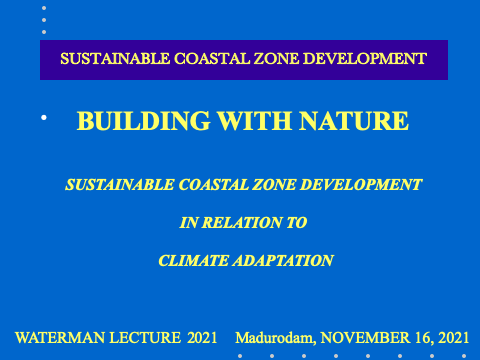
The Dutch have always been active at the interface between water and land.
A new phase in this hydraulic engineering tradition is sustainable coastal and delta policy via Building with Nature, which makes greater use than before of materials present in nature and the forces and interactions that act on them.
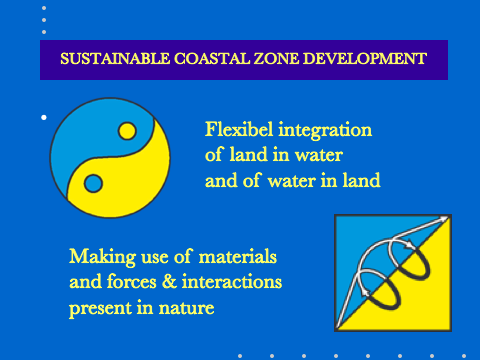
For simplicity I use two symbols: the square symbol represents land/sand and sea/water. Further indicated are the transport of sand away from the coast by erosion and slow accretion in calmer periods. And we are dealing with a net transport of sand along the coast. Thus, materials and forces are indicated in this symbol.
The second, well-known yin-yang symbol represents the ultimate goal, namely integration of land into sea and of water into the new and old land in the form of lakes, lagoons, harbour basins and freshwater lenses under the dunes. The aim is a new, flexible dynamic equilibrium coastline of a certain curvature, with a small maintenance factor in the form of periodic sand suppletion and with a minimum of hard sea-defence elements, only at those places where erosion is very dominant and where there are harbour entrances. So, as far as the Dutch coast is concerned, not dominant dams and dikes as bulwarks against the sea, but dunes and beaches in harmony with the sea.
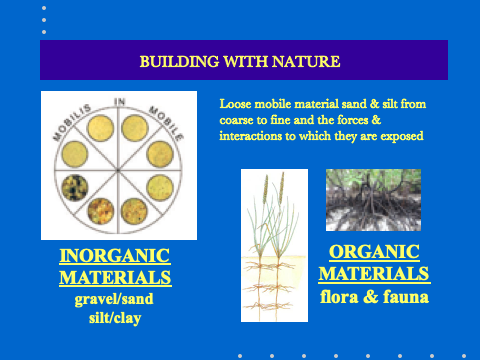
We start from the loose movable material sand from fine to coarse and the forces, influences and interactions acting on it. One would think that this is an infinite number, but there are only 10 and I will mention them:
- tidal movement (ebb and flow)
- waves
- sea currents, other than tides
- gravity
- wind
- river outflows as a force and a supplier of sediment and fresh water
- rain
- sun
- interaction between dunes and vegetation, because the root system of vegetation such as marram grass and colostrum grass hold the sand and in silt-rich tropical areas we apply mangrove
- then there is the complex interaction between marine organisms such as micro- and macro-algae, sea grass and even molluscs and worms in relation to sand and silt, which together contribute to the stabilisation of the wet foreshore.
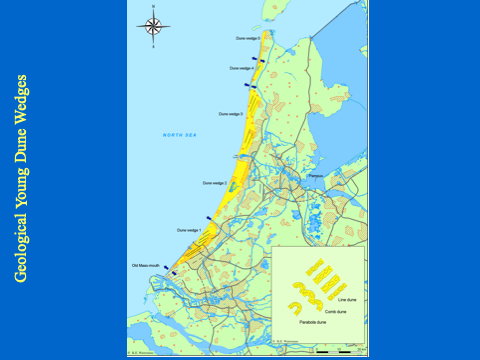
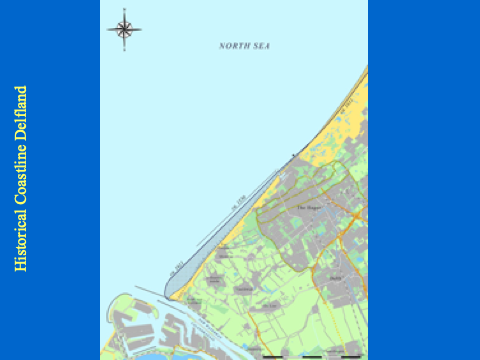
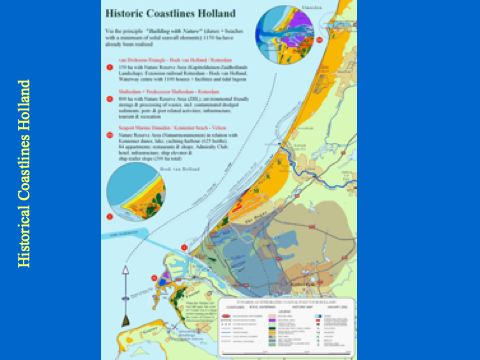
The Netherlands has three types of coast:
- the Wadden coast
- the closed, segmented coast between Hoek van Holland and Den Helder with five geologically young dune wedges with intermediate weak spots, namely the old Maasmond, the old Rijnmond, the IJmond and the Hondsbosche & Pettener Zeewering
- the estuarine coast in transition between Hoek van Holland and Belgium with the so-called head structure: the head of Goeree, the head of Schouwen-Duiveland, the head of Walcheren with a small incision, while in this coastal section we are already faced with a dominant south-westerly coastal orientation from Belgium.
Building with Nature is indissolubly linked to an integral multifunctional coastal and delta policy in order to answer the question: How can we bring a whole series of existing and forthcoming problems to a balanced solution in relation to the existing hinterland on the one hand and the adjacent sea on the other, while creating added value? It concerns 21 main functions and their derivatives. Ultimately, we must also look at the financing of a project.
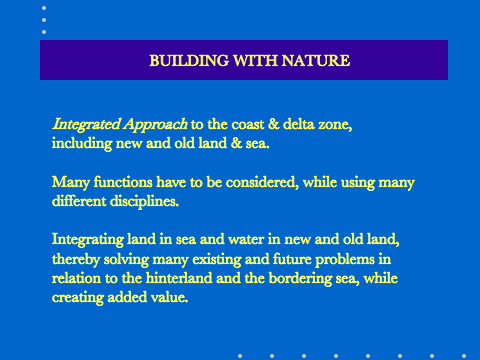
When we consider integrating land into the sea, we must realise that the sea is important for inspiration, experience, nature, sustainable fishing, shipping and other activities, such as wind farms and facilities. So we have to be careful. That means we have to pay attention to many functions in all their intricate coherence.
While we look out to sea, we must also look inland, where there are already many functions. That collection of functions in all their mutual coherence we have represented in pictograms in the form of stamps, because with stamps we think of a series, a collection.
(The stamps can be seen in more detail by downloading the presentation at the bottom of this page)
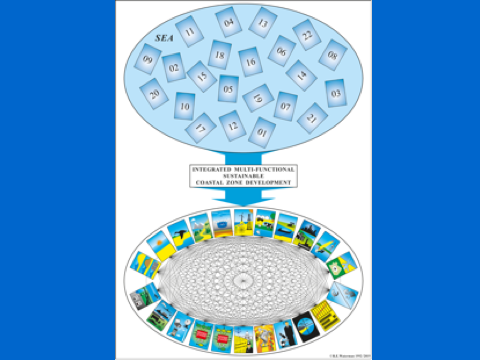
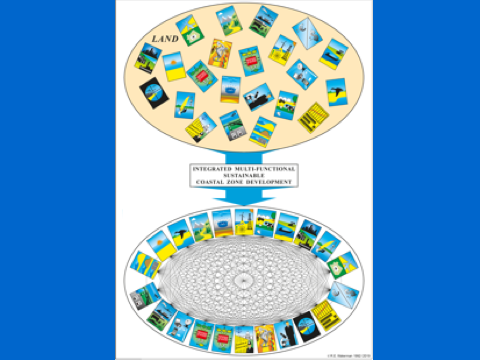
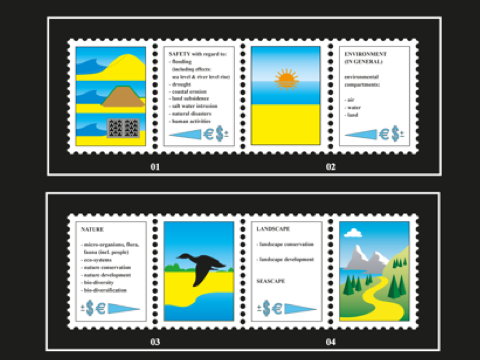
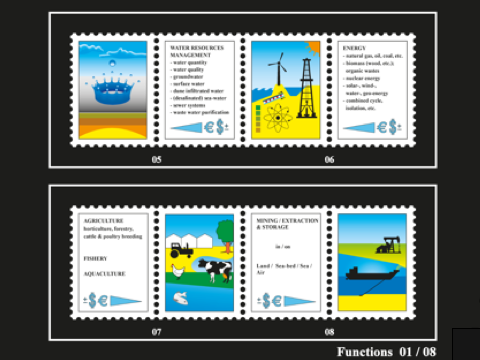
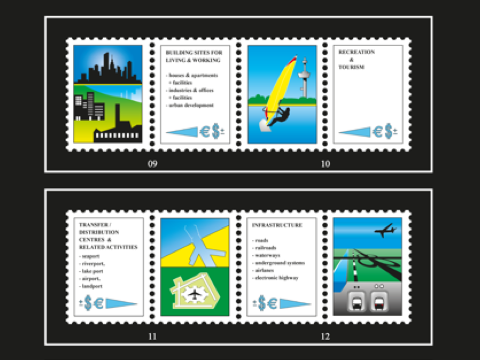
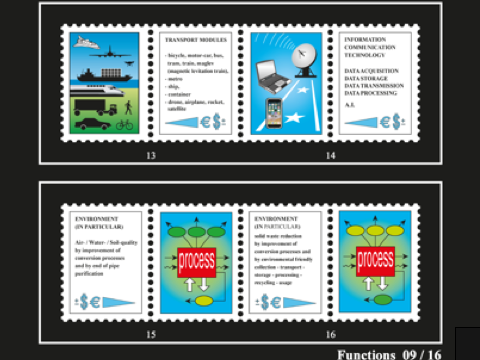
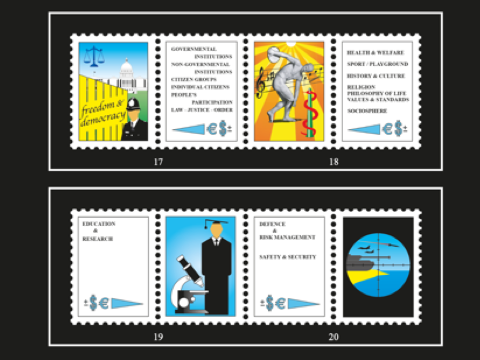
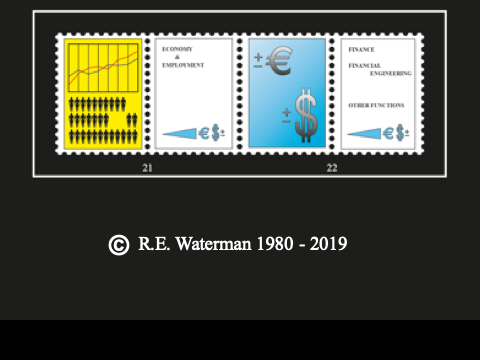
Ultimately, these are flexible master plans that can be implemented in phases, segment by segment. This approach has led to a whole series of plans for the Dutch coast, 12 of which have now been implemented in full or in part, covering a total area of over 3,500 ha. The Study Zone Coastal Development Scheveningen - Hoek van Holland and the zone Katwijk - Noordwijk have been established.
Since 1980, I have further developed and shaped this concept at home and abroad, partly inspired by the work of my esteemed predecessors Honzo Svasek and Jan Agema.
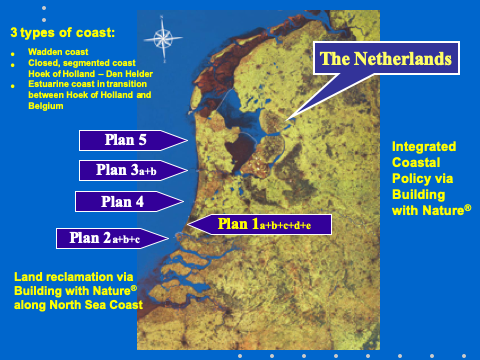
Beginning in the 1970s, these coastal reinforcement and expansion projects are featured in the film 'Building with Nature'. Some possible future developments at various locations along the coast are also shown. The documentairy can be seen hier .
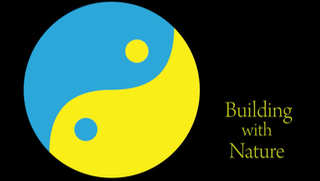
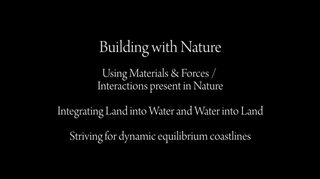
CLIMATE CHANGE
Building with Nature is an important instrument for sustainable coastal development, also in relation to climate change, manifested by a continuing rise in sea level, a higher frequency and intensity of storm surges and, in the hinterland, a higher frequency and intensity of rainfall, alternating with periods of drought, as well as subsidence.
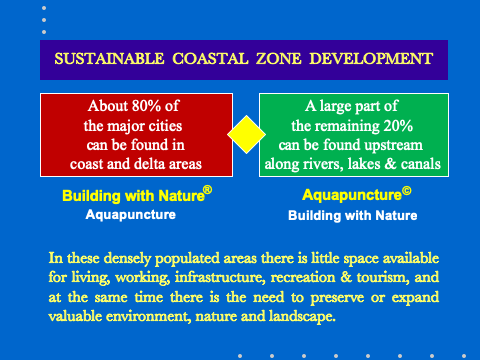
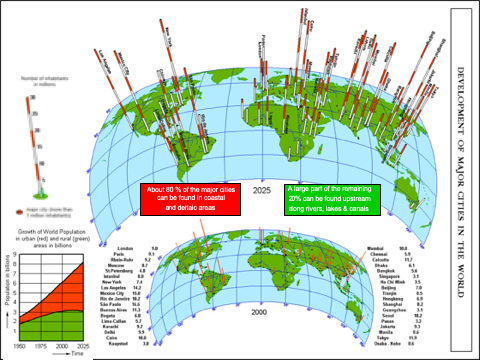
Safety is therefore at stake. Moreover, without exception, space for living, working, recreation and infrastructure is scarce in these vulnerable, densely populated coastal and delta areas. This is also the case in Zuid-Holland, particularly in the area around the southern wing of the Randstad. Moreover, we aim to preserve, and if possible expand, environmental, natural and landscape values.
There is a perfect analogy between
- Living Coast - Room for the Coast
- Living Rivers - Room for the River
- Living Deltas - Room for the Delta
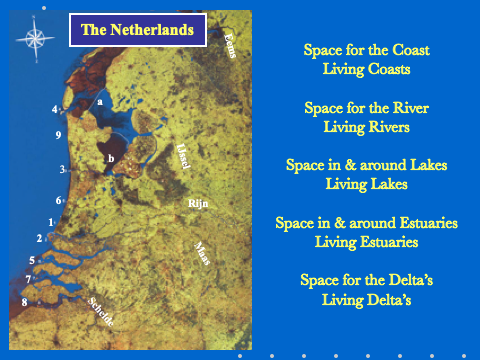
In addition to 'Building with Nature', 'Aquapucture' plays an important role. Aquapuncture focuses on the optimal use, adaptation, management and perception of inland waterways and their waterfronts.
What this is ultimately about is coastal development at the service of
- Safety
- Large-scale nature development with recreational co-use, including the seaward expansion of the new National Park Hollandse Duinen
- Reinforcement of the metropolitan business climate
- Specific development of Hook of Holland, Scheveningen and the Katwijk-Noordwijk zone
- Innovation using the third dimension - height and depth, and the fourth dimension - recycling of functions
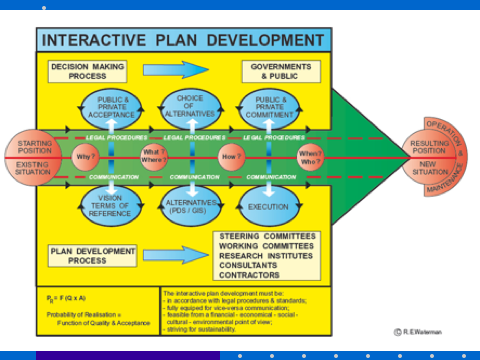
I would like to conclude with six quotations:
"A people that lives builds its future" - Lely
"Creative Thinking - Spectacular Doing" - KIVI motto
"Who does not believe in dreams is not a realist" - Ben Gurion
"Dreams are not meant to lull you to sleep but to wake you up" - Magritte
" The great challenge of the 21st century is to develop and implement methods that simultaneously strengthen the economy and improve the environment" - R.E.W.
And in the face of adversity, remember that "No railway can be built without sleepers".
Dr. Ir. Ronald E. Waterman MSc
